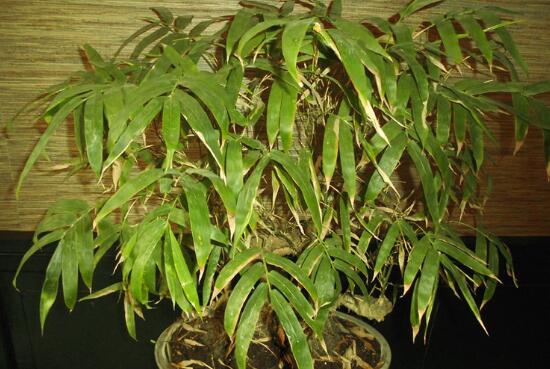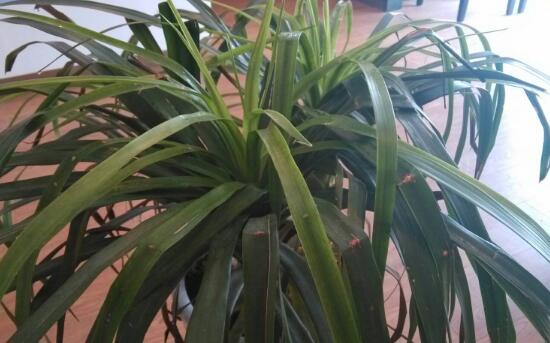What to do with the loss of leaves, replenish light / irrigation and dilute fertilizer / spray with diseases and insect pests
Fulutong, an evergreen foliage plant, has belly-like leaves that people like to see. In life, many flower friends raise Fulutong to see its leaves, so when these beautiful leaves turn yellow and ugly, flower friends must be in a hurry! So, what about the foliage of Fulutong? Today, the editor is here to solve this problem for everyone.
What if the leaves of Fulutong fall off?

When it comes to the loss of leaves, in addition to the bad environment, it is caused by improper maintenance: if the light is not enough, add light; if you are frostbitten, you need to keep warm; when you water too much, you loosen the soil and let the water evaporate quickly; when you fertilize too much, irrigation dilutes the fertilizer; if you encounter diseases and insect pests, we need to spray to prevent and control them.
2. analysis of the reasons for the loss of leaves in Fulutong.
1. Poor ventilation
If we want to talk about the reason why Fulutong lost its leaves, we should first consider whether it is an environmental problem. One of the requirements of Fulutong indoor breeding is ventilation, once too closed, it will make Fulutong lack of oxygen and produce the phenomenon of yellow leaves.
Solution: encounter this situation, it is very simple, put Fulutong in the indoor ventilation place, but we should be careful not to let the plant be blown by the cold wind.
2. Lack of light
Although Fulutong is more shady, it also needs sufficient light in the process of growth. once it is placed in the dark for a long time, its leaves will turn yellow and fall due to lack of photosynthesis.
Solution: because Fulutong avoid strong light, you should put it in a place of astigmatism and let it bask in the sun every 3-5 days to supplement the sunlight needed for growth.
3. Be blown by the cold wind
Fulutong likes a warm environment, it is not cold-resistant, in winter, it should be moved to indoor maintenance, and prevent it from being blown by the cold wind, otherwise it will lose its leaves.
Solution: in winter, do a good job of warm measures, the indoor temperature should be maintained not less than 10 ℃. In addition, the environment should be ventilated, but to prevent the plant from being blown by the cold wind.
4. Overwatering
In addition, although Fulutong likes to be wet, it taboos stagnant water in the soil. Once it is overwatered, it will lead to stagnant water in the basin and rotten roots, which will cause the leaves of Fulutong to turn yellow and fall off.
Solution: if there is water in the basin, loosen the soil and let the water evaporate quickly; if the water accumulates for a long time, the roots of the plant rot, you need to fall off, replace the basin soil, and then plant it again.
5. Excessive fertilization
Flutong in the growth process, need a certain amount of fertilizer, but we should not apply too much fertilizer, once the fertilizer is too much or too thick, it will also cause leaves to yellowing and falling.
Solution: remove Fulutong from the basin, wash the root with clean water, rinse the root several times continuously, then soak the root in clean water, wait for the leaf to recover, change the new soil and replant.
6. Diseases and insect pests
In the process of raising Fulutong, it will inevitably be attacked by diseases and insect pests, resulting in leaf damage, yellowing and falling.
Solution: if it is caused by diseases and insect pests, we should determine which kind of pest it is, and then spray the leaves with relevant agents, which will return to health after a period of time. As for what liquid should be sprayed, you can refer to the disease and pest control of Fulutong.
The reason for the loss of leaves, generally speaking, mainly on the above six, after reading the full text, we encounter the leaves again, we should know how to do it! In fact, the loss of leaves is caused by one reason, but it is often caused by a variety of factors, so when we encounter this situation, we must make a correct diagnosis, so that we can prescribe the right medicine to the case.
What if the leaves of Fulutong turn yellow, suitable for light / reasonable water and fertilizer / spraying for diseases and insect pests
As a popular foliage plant recently, Fulutong has many functions, but what people like most is its ornamental value, especially the evergreen leaves of the four seasons, which make people feel good. So when these beautiful leaves turn yellow, flower friends must be in a hurry! So, what if the leaves of Fulutong turn yellow? Today, the editor is here to solve this problem for everyone.
What if the leaves of Fulutong turn yellow
When it comes to the yellowing of Fulutong leaves, in addition to environmental discomfort, it is caused by improper maintenance: if the light is less or strong, the leaves will turn yellow, replenish light and shade in time; if it is caused by improper water and fertilizer, reasonable watering and fertilization, no more nor less; if caused by diseases and insect pests, timely spraying for prevention and control.
Second, the causes and solutions of the yellowing of the leaves of Fulutong.
1. Environmental mutation
Generally speaking, there are many reasons for the yellowing of Fulutong leaves, but the first thing that comes to mind is the environment. Nowadays, flower friends' Fulu paulownia potted plants are bought online, which can easily lead to large geographical cross-service, great changes in the environment, and the plant can not adapt for a while, resulting in leaf yellow symptoms.
Solution: very simple, according to the growth habits of Fulutong, provide its best growth environment, and then maintain for a period of time, it will return to health.
2. Light discomfort
Lack of ① light: Fulutong likes light and needs enough light during its growth. Once it is placed in a shaded place for breeding, it will make it unable to absorb the light needed for growth for a long time, and its leaves will wilt and turn yellow. The solution: simply put flutong in a place with plenty of light, with good ventilation, and pay attention to avoid direct sunlight in summer.
② light is too strong: although Fulutong needs sufficient light, it avoids strong light. Once the light is too abundant, or if it is directed by strong light, its leaves are prone to sunburn, resulting in yellow leaves. Solution: immediately move Fulutong to the indoor ventilation place, and appropriate watering, then carefully maintain for a period of time, and then slowly let it receive light, and soon the leaves will change their luster.
3. Overwatering
Fulutong likes to be wet, but avoids wet water, so watering the right amount is OK, not too much. Once too much watering leads to stagnant water in the basin, the root system of the plant will not breathe smoothly, and the leaves will not absorb nutrients. It is not surprising that the leaves of Fulutong will turn yellow over a long period of time.
Solution: find timely, loosen the soil, let the water evaporate quickly; once there are rotten roots, the plant should be removed from the pot, and then cut off the rotten roots, replaced with new pot soil and replanted.
4. Fertilizing too much or too thick
Fulutong likes to be fat and has enough nutrients to make its branches and leaves flourish. But like although like, there is also a degree, once the Fulutong fertilizer too much, or too thick, it will burn the roots of the plant, and then cause the leaves to turn yellow.
Solution: stop fertilizing immediately, then dilute the heavy fertilizer already applied with water, and pay attention to flushing it several times; if the root has been burnt, take off the pot and cut the root, replace it with new potted soil and replant it.
5. Diseases and insect pests
In the process of breeding Fulutong, because of improper maintenance, or poor environment and other reasons, plants will suffer from diseases and insect pests, their emergence not only harm the health of plants, but also easily cause leaves to yellowing.
Solution: if the leaf yellow caused by diseases and insect pests, we only need to identify specific diseases or insect pests, and then for spray control, as for what medicine to spray, you can refer to the disease and pest control of Fulutong.
Generally speaking, the breeding method of Fulutong is not difficult, but because many flower friends are novices, it is inevitable that the symptoms of leaf yellow will appear. However, after reading the full text, I believe you have a clear mind, the leaf yellow problem can be solved in accordance with the above method. With regard to the yellowing of the leaves of Fulutong, the editor has introduced this, hoping to bring help to everyone.
What if the leaves of Fulutong turn yellow? what if the leaves of Fulutong turn yellow?
Castanopsis grossedentata is a subtropical evergreen plant, and the lowest temperature for growth is about 10 ℃. If the temperature is low before and after winter, its leaves will turn yellow and fall off due to freezing. In addition, in the colder season, too much watering will also cause the leaves to turn yellow and fall off.
When potted Fulutong is placed indoors, it should be placed in a cool place and sprayed with water to cool it, so as to create a cool small environment close to its original conditions. If the sun shines directly, the leaves will dry up.
What if the leaves of Fulutong turn yellow?
The yellowing of Fulutong leaves will certainly affect its beauty and its growth, so what is the reason for the yellowing of leaves?
The reason for the yellowing of Fulutong leaves: too much watering
Fulutong likes to be wet, but avoids wet water, so too much watering will not promote its growth, but will cause some adverse symptoms, such as yellowing of leaves.
Because Fulutong is also resistant to drought, its roots will grow normally in a dry state, but it is afraid of water soaking, once too much water, it will cause root rot, thus affecting the growth of leaves and gradually yellowing.
Prevention and cure measures
Reduce and control the amount of water, especially pay attention to the cold weather in autumn and winter, do not water too much, prevent and cure rotting roots.
The reason for the yellowing of Fulutong leaves: lack of light
Fulutong has a habit of high temperature and needs enough light to grow, so when you breed it in a shade, its leaves will wilt and turn yellow when you can't absorb the light needed for growth.
Prevention and cure measures
Put Fulutong in a place with plenty of light, and be well ventilated, and pay attention to avoid direct sunlight in summer.
The reason for the yellowing of Fulutong leaves: insect pests
The most common pest of Fulutong is the red spider pest, which damages the leaves and causes reddish-brown spots on the leaves, which gradually turn yellow when the red spiders feed on the sap of the plant.
Prevention and cure measures
You can wash the plant with water, rinse the red spider clean, or use the drug acaroid mite to spray the plant to get out of the pest.
The reason for the yellowing of Fulutong leaves: high concentration of fertilization
Maybe when you fertilize Fulutong, you apply fertilizer too many times and at a high concentration, which will burn the roots of the plant and cause the leaves to turn yellow.
Prevention and cure measures
If this happens, you should stop fertilizing immediately, or dilute the heavy fertilizer already applied with water, and pay attention to flushing it a few more times. The rapid evaporation of water. At the same time, proper soil loosening can be carried out.
- Prev

How to deal with yellow leaves of Podocarpus, summer shade/reasonable watering/pest spray
Podocarpus, different from ordinary bamboo, its bamboo knot is thin, internodes short and inflated, like stacked arhat, hence the name. In life, there are many people who raise Podocarpus. Looking at its peculiar bamboo joints and green leaves makes people feel happy, so when yellow leaves appear, flower friends are extremely bad! so
- Next

What if the leaves of asparagus turn yellow, replenish the light / warm up in winter / reasonable water and fertilizer
Asparagus, a beautiful foliage plant, has beautiful shape, leaves such as weeping willow, pure color, and is very ornamental at home. For veterans, asparagus is a kind of green plant that is easy to raise, but for novices, the leaves of asparagus always turn yellow, so what about the yellowing of leaves?
Related
- Fuxing push coffee new agricultural production and marketing class: lack of small-scale processing plants
- Jujube rice field leisure farm deep ploughing Yilan for five years to create a space for organic food and play
- Nongyu Farm-A trial of organic papaya for brave women with advanced technology
- Four points for attention in the prevention and control of diseases and insect pests of edible fungi
- How to add nutrient solution to Edible Fungi
- Is there any good way to control edible fungus mites?
- Open Inoculation Technology of Edible Fungi
- Is there any clever way to use fertilizer for edible fungus in winter?
- What agents are used to kill the pathogens of edible fungi in the mushroom shed?
- Rapid drying of Edible Fungi

